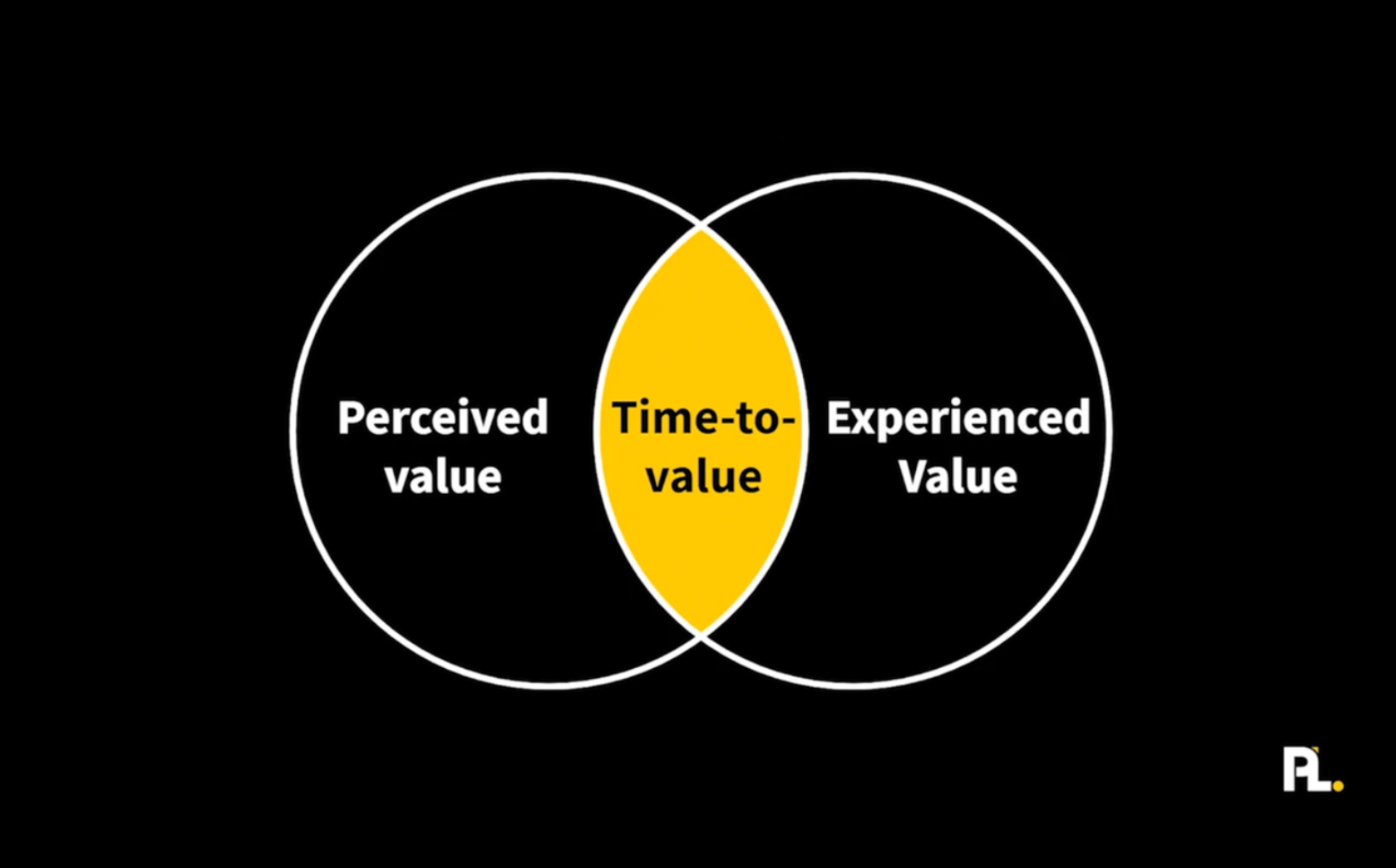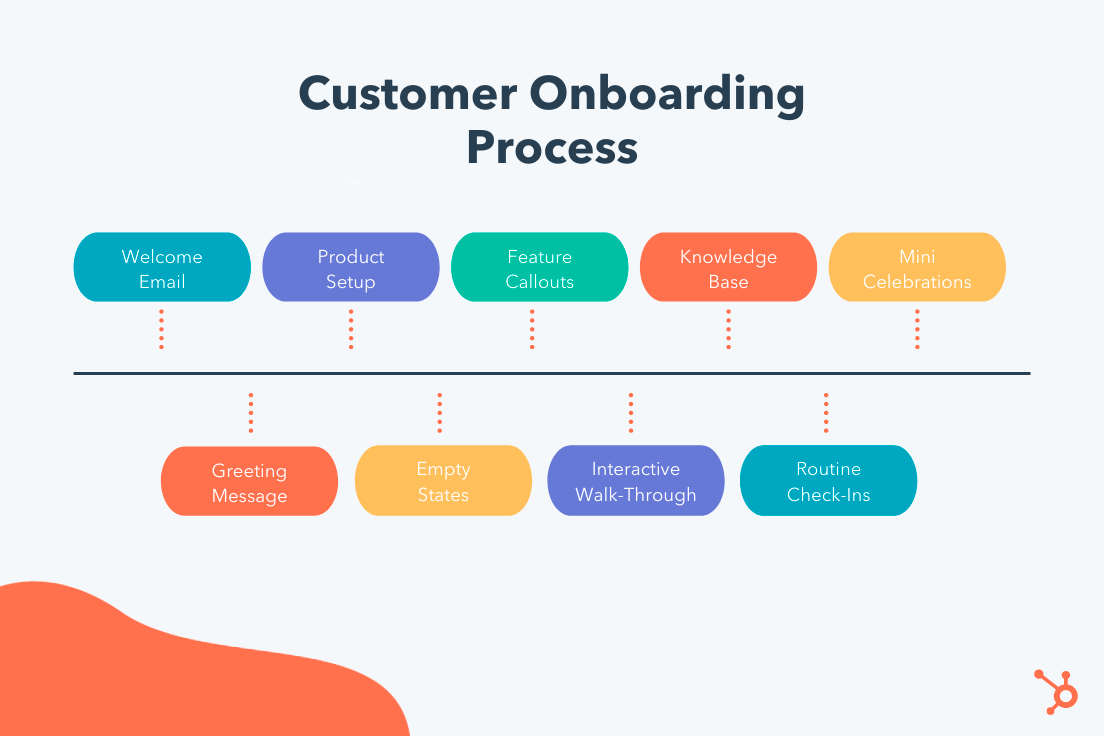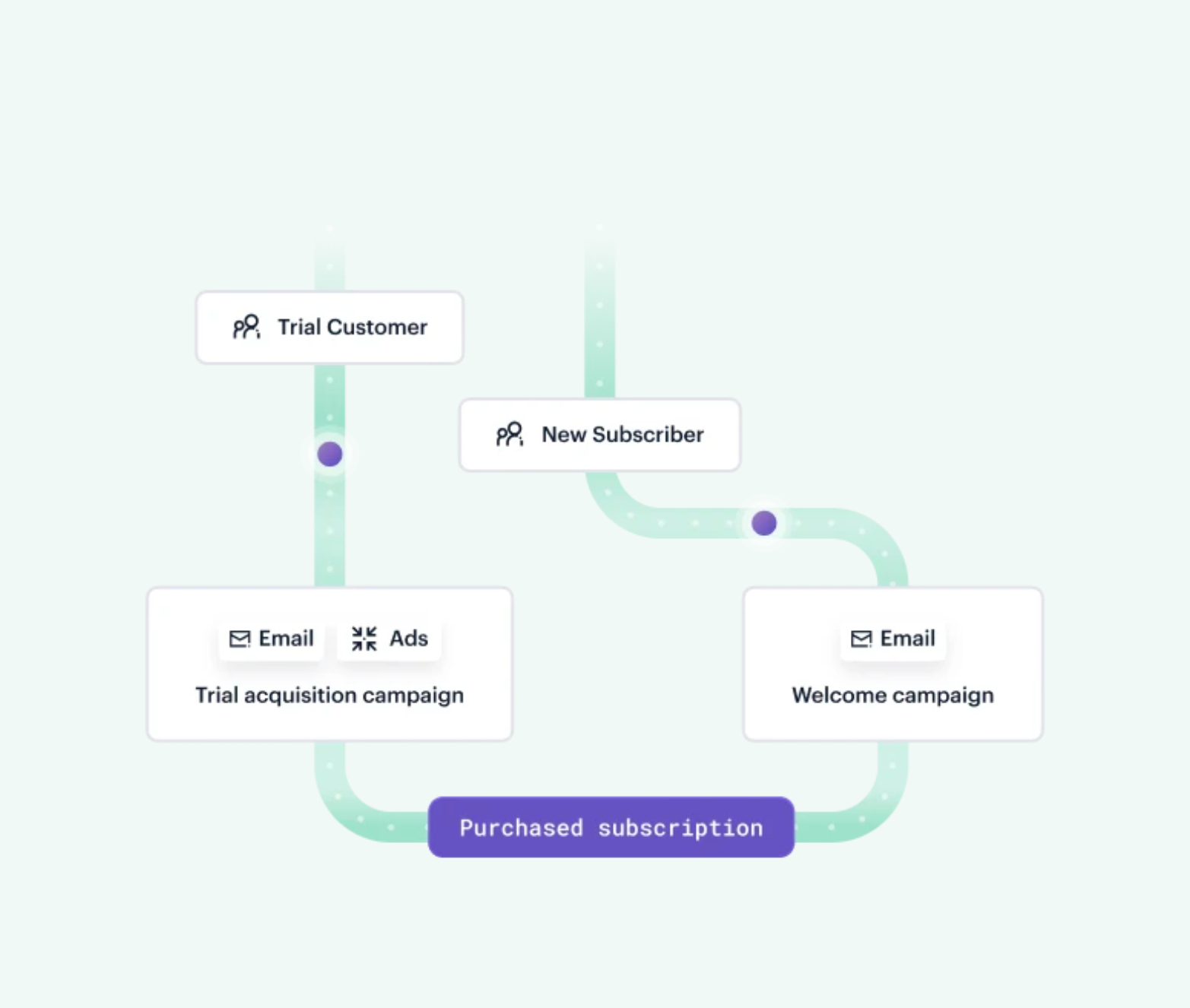How to Build the Perfect Customer Onboarding Process
We overview the important steps in the customer onboarding process and how to build your own.
What your customer onboarding process needs to accomplish
A customer onboarding process consists of the activities and resources that introduce someone to a product. The goal is to get a new user to experience product value as soon as possible – the so-called "Aha!" moment – and motivate them to keep returning instead of churning.
Customer onboarding is like your first day at a new job. Do you get shown around by someone from HR? Is there an onboarding checklist to walk through how everything works in your company? Is your computer ready? Do you go for lunch or a virtual coffee with your new teammates?
All these initial actions and assets – or lack thereof – leave a lasting impression on your new employee and impact your future at the company. So it is with a product and its new customer onboarding experience.
Minimize your product’s time-to-value
Sometimes a product isn't the solution to a customer's problem. More often, there is a match, but the user onboarding experience loses the race against the customer's attention span – their patience runs out before reaching the Aha! Moment.

Time-to-value expresses how long it takes until a new customer experiences the value of your product for the first time. This period should be as short as possible by removing anything from the initial customer journey that slows down this process. For example, product tours and tutorials of more advanced features or asking a user to register can often wait until later.
Yet every product is different, so there's no fixed formula for getting to value the fastest. To optimize the experience, you need to understand your users' pain points and personalize onboarding for different personas, topics we'll come back to in more detail later.
Enable customers to achieve success with the product
Your customer onboarding process should offer users everything they might need to solve their pain points with your product. But you don't want to push every available explanation, feature, or resource to everyone all at once, as that will overwhelm and scare off most users.
To achieve this balance, leverage segmentation and autonomy:
Segment the onboarding process into different phases and use cases, revealing more and relevant features as customers progress on their journey.
Let users explore the resources within each phase instead of forcing them to follow a particular onboarding journey.
Boost retention and create positive word-of-mouth
Strong customer retention metrics and word-of-mouth user acquisition signal a winning customer onboarding process.
Retention goes up when users quickly experience value and understand all the ways in which your product can help them achieve success – they'll keep coming back for more. Such loyal customers also tell others about your product, bringing in new clients your onboarding process can again transform into promoters.
A six-step onboarding process
You'll encounter the six steps and features in most onboarding processes below. We'll show how to make each phase action-oriented to guarantee customer success and a reduced churn rate.

1. Signup
Objective: Security, privacy, and essential customer data collection
Typical touchpoints: In-app screen, sometimes email
Most products, especially in SaaS, can't function without a user account. Much more than an email address and password usually isn't required for a first login. Yet many companies ask for a lot more information during signup.
Trying to get more data during signup is sometimes justified, for example, to personalize the rest of the onboarding process to distinct user personas. But don't collect information that's nice to have, as you'll likely lose users right away.
Take the case of Snappa, a design app for people who aren't designers. They dropped the need to confirm an email address, and 27% of users who previously didn't opt-in and Snappa wrote off now continue their onboarding journey because of that change.
2. Welcome email and greeting message
Objective: Say thanks and provide the next steps
Typical touchpoints: In-app message, email
There are two touchpoints where you should welcome people: in-app with a message and by email. Keep it extra short in-app. Say hi, or thanks, or both, and give a suggestion on what to do next.
Your welcome email can be a bit more extensive: introduce yourself, invite feedback, and point people to FAQs or other relevant content for new users. Whatever you include, make sure to prominently refer people back to your product, as that's where you most want them to go.
3. Guided product tutorial
Objective: Highlight the path to value
Typical touchpoints: In-app messages, email
A guided product tour can be helpful, but only when it:
Covers one action, feature, or topic.
Makes clear in advance what your customer will get out of it.
Allows the user to skip it or return later.
Gives a quick win, like completing a small task or short product session.
You can fulfill most of these characteristics by filling empty states—screens not yet filled with usage data—with feature explainers and by including progress bars or checklists.
4. Additional feature pop-up guides
Objective: Nudges to advanced feature discovery
Typical touchpoints: In-app messages
You can add tooltips, notifications, and other pop-ups to the product experience to highlight advanced features. Feature usage can trigger such nudges, but also a lack thereof, say when someone hasn't discovered an essential functionality after some time.
Pop-up guides can take many forms, from a short in-app message to videos that play within your product or external resources that you reference, like a blog post. To avoid friction and irritation, make such nudges dismissible, non-intrusive, and intelligent – displayed to the right people based on the right trigger.
5. Customer self-service resources
Objective: Troubleshooting and expanding usage
Typical touchpoints: Knowledge base, content (blog, ebooks, videos), user community, onboarding calls, templates
As a user discovers the main product features during the previous steps, you can start to deepen their knowledge. Use content to explain niche and pro product use cases and offer troubleshooting resources through a knowledge base and FAQs.
Customers in this stage – who have invested time into your product – are often ready to talk to you, for example, in an onboarding call or user interview. They're also motivated to learn more through videos and webinars or join a community with other users where they can help and inspire each other.
6. Follow-up messages
Objective: Strengthen engagement and reduce churn
Typical touchpoints: In-app messages, email, SMS or push notifications, phone calls
Follow-up messages can and should span the lifetime of your customer relationship. Users who reach this stage need less handholding and encouragement than those earlier in the onboarding process. Still, you don't want to lose touch with them completely, so check in regularly with tips, best practices, and other helpful resources.
Highlight customers' achievements or usage milestones with your product, like their 100th session or the tenth teammate who joins. Also put in place mechanisms to identify users at risk of churning, for example, when their daily logins decline. Depending on your product and customers, you can use automation for such initiatives, like in-app messages or emails. An alert to your sales team to plan a phone call with an at-risk customer can also be appropriate, especially for B2B SaaS companies or other products with higher pricing.
5 Tried-and-True Onboarding Campaigns + Templates
This step-by-step guide describes how to implement 5 user onboarding campaigns to drive long-term loyalty.

Five best practices for the perfect customer onboarding process
Crafting the perfect customer onboarding process isn't magic. It emerges from a deep understanding of customer needs, personalization, and automation using customer data and constant testing and tweaking of your product experience. Keep in mind these five best practices to ensure you do so.
1. Identify metrics of success
Talk to stakeholders in your organization to understand the larger business goals and how your product supports those. Then consider how a customer onboarding process can lay the foundation for achieving those objectives with your users and capture those goals in customer onboarding metrics.
2. Plot onboarding processes for multiple customer journeys and goals
Most products have more than one type of customer, each with their preferred communication channels and goals they hope to achieve with your product. Create a unique onboarding process for every individual persona.
3. Use personalized auto-triggered messages at different steps of the process
Use your customer data to personalize the content of auto-triggered messages for each user. Say you have two user personas for a communications product: a marketing manager and a sales rep. To the marketer, you talk about how feature X simplifies managing social media conversations. In contrast, you explain to any user on a sales team how that same functionality helps them log customer calls.
4. A/B test all aspects of the onboarding process
Create different variations of each element of your onboarding process and test which version performs best against the metrics of success you've identified. You can only run a small number of such tests at a time, so start where you expect the most impact on your metrics.
5. Harness engagement data and customer feedback
Collect quantitative engagement data (like an NPS score) and qualitative customer feedback (from customer support and user interviews) to continuously improve your customer onboarding process.
Why a data-driven approach to onboarding is key to success
A fast and personalized path to the aha! moment for multiple personas is only possible by leveraging customer data. A customer data platform (CDP) like Twilio Segment collects information that helps tailor the user experience from the first moment they connect with you.
A link someone clicks in an email, the pages they visit on your website, or the features they use in your product – you can use all of these data points to adapt the customer onboarding process.
A CDP like Twilio Segment makes this straightforward. You can capture data from hundreds of sources, resolve customer identities automatically, and make that information available through unified profiles. You can then connect those to your product and other tools to orchestrate the onboarding process with Journeys – all in real time.
Interested in hearing more about how Segment can help you?
Connect with a Segment expert who can share more about what Segment can do for you.